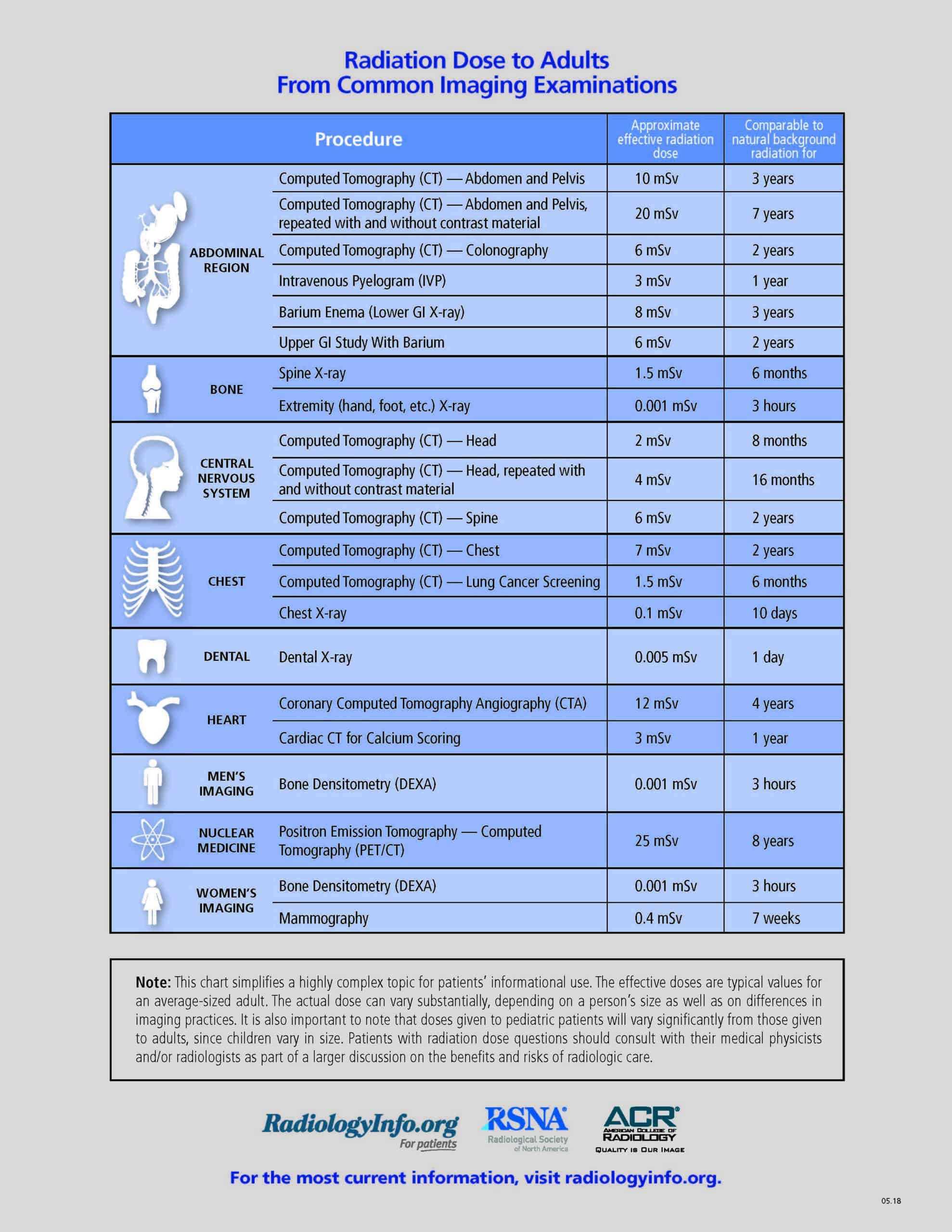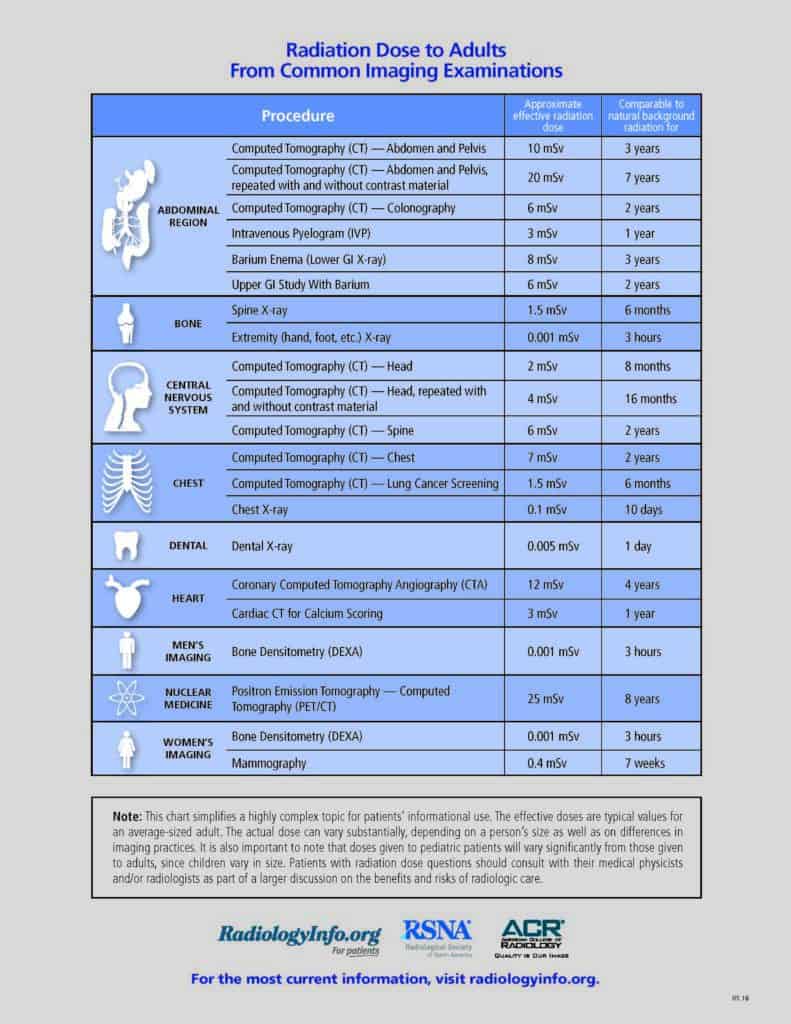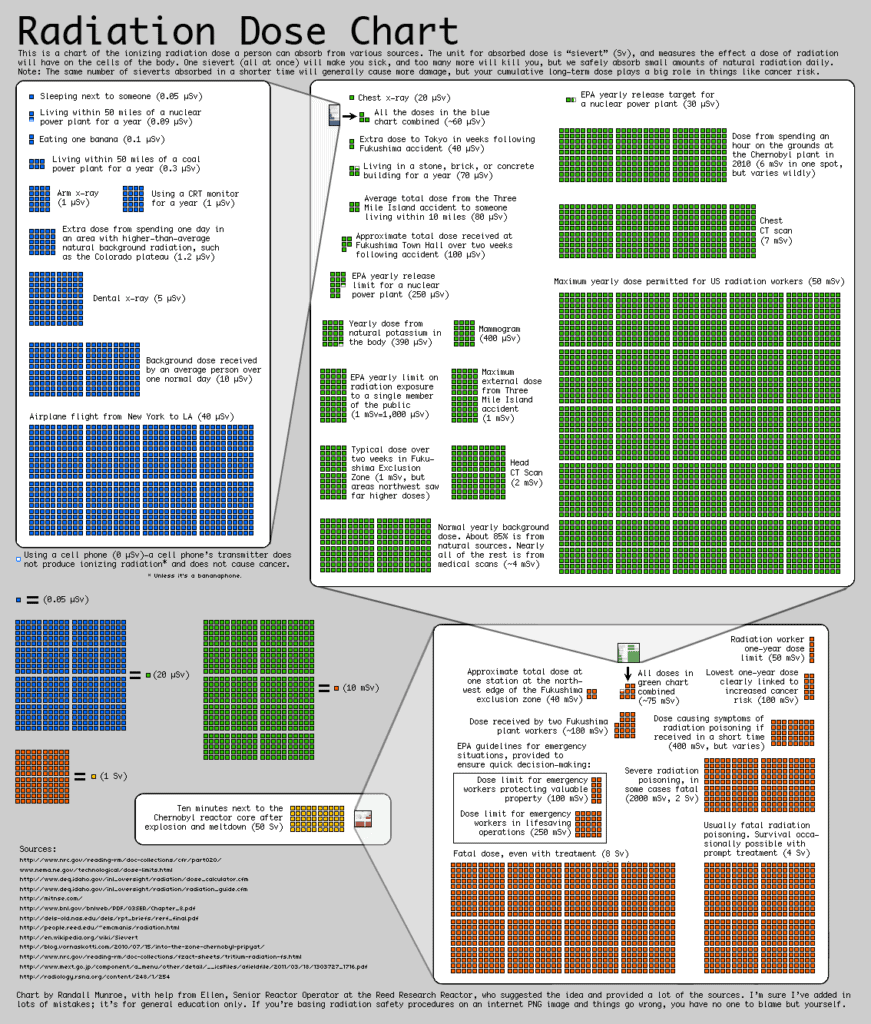During your time in practice, you will undoubtedly run into a patient who is concerned with exposure from radiographic examinations. Our goal as healthcare providers is to help alleviate their concerns and to present information in a way that is positive and easy to understand.
The easiest way I've found to convey this information is to compare the dose received by dental radiographic examination to radiation exposure to common activities. Here's a list of other radiation sources compared to dental examinations:
Non-dental and non-medical sources
Eating a banana: .1 µSv
Using a CRT monitor for a year: 1 µSv
Extra dose from spending a day in Denver: 1.5 µSv
Normal daily background dose for an average person: 10 µSv
Airplane flight from NY to Los Angeles: 40 µSv
Additional yearly dose to aircrew members: 3,000 µSv
Yearly cosmic radiation while living at sea level: 300 µSv
Yearly cosmic radiation while living in Denver: 800 µSv
Yearly dose from natural potassium in the body: 390 µSv
Yearly dose from naturally present Radon in average US home: 2,300 µSv
Total average yearly dose from natural background radiation: 3,000 µSv
Medical sources
Chest x-ray: 100 µSv
Mammogram: 400 µSv
Head CT: 2,000 µSv
Chest CT: 7,000 µSv
Dental sources
BW series: 5 µSv
FMX: 35-170 µSv
Panoramic: 10 µSv
CBCT: approx. 200 µSv (varies from approx. 11-1000 µSv as dose is dependent on field of view and scanning protocols)
So when I have an individual in the clinic who expresses concern about the amount of radiation they'll be receiving, I'll phrase my response similar to the statement below:
"I understand your concern about radiation from dental x-rays. Our x-ray machines are designed to administer as little radiation as possible while maintaining diagnostic accuracy. To give you an idea of how little radiation you would receive, you would be exposed to more radiation if you were to fly round trip from here in Los Angeles to NYC than from the x-rays (FMX) we're taking today. Or, if you were to move from Los Angeles to Denver, you'd be exposed to twice as much radiation in a year as you would from taking a CBCT today. Compared to the natural background radiation that we all receive, dental x-rays contribute a minimal amount of radiation but make a significant impact on the outcome of your treatment and overall health."
While I'm sure this information will not assuage every patient, acknowledging the patient's concern and helping them understand the principle behind radiation exposure hasn't failed me yet!
Sources come from the ADA, EPA, and NRC.
I've attached some images that compares doses from different radiation sources for reference. Just a note - be careful of units. 1,000 µSv = 1 mSv = 100 millirem.




